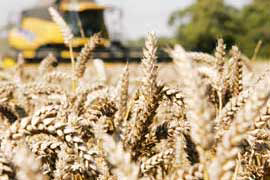Alltech presents its Europe 2013 Harvest Survey

Alltech recently conducted a survey of European feedstuffs from the 2013 harvest using their 37+™ Programme. In announcing the results, Alltech urges producers to protect their animals and their profits from the dangers of mycotoxins.
The survey found that 100% of both wheat and corn samples analysed contained mycotoxins, and furthermore that the presence of just one mycotoxin in a sample is the exception rather than the rule.
A staggering 93% of corn samples contain six-12+ mycotoxins, while 78% of wheat samples contained three-11 mycotoxins. This multiple mycotoxin contamination is a real concern as the presence of one mycotoxin often exaggerates the effect of another and as a result, the impact on animal health and performance is greater than is expected. The survey showed high levels of risk associated with wheat particularly in the Northern and Eastern Europe due to the presence of DON (found in 90% of samples),Type A and Type B Trichothecenes and other Penicillium toxins.
Corn samples too were found to have widespread broad spectrum contamination. The breakdown of mycotoxins present in corn samples varied significantly according to geographical location. For example, Type B Trichothecenes were the predominant risk in Northern Europe while fumonisins, Type B Trichothecenes and Type A Trichothecenes presented greater risk in Eastern Europe.
Alltech, a leader in animal health and performance, through its 37+ Programme has identified 38 toxins most detrimental to animal health and performance. The samples were analysed at the Analytical Services Laboratory, powered by Alltech, for the presence and level of these 38 separate mycotoxins. Alltech’s dedicated Mycotoxin Management Team can interpret the findings so that producers have a more accurate picture of how the mycotoxins can affect the quality of European feedstuffs and in turn each of the major species. The team has developed the Risk Equivalent Quantity (REQ), one figure that represents the overall risk to a given species’ health and performance by considering the challenge as a whole.
To people who focus on management techniques and solutions that help producers safeguard the quality of their feed and the health of their animals,” said Caramona.
Increased demand on animal performance and productivity inevitably brings new challenges and risks to modern animal production. Mycotoxins and their impact on the health and performance of animals are inherently linked to these demands, threatening the safety of feed and the security of food supply. Effective mycotoxin management is, now more than ever, fundamental to the success of any farm or feed mill.











